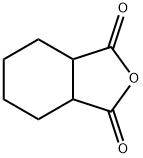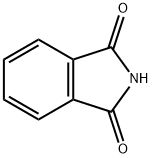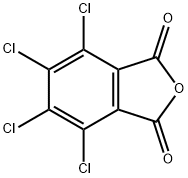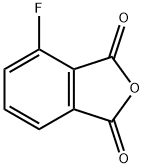Hexahydrophthalic anhydride
Synonym(s):Hexahydrophthalic anhydride
- CAS NO.:85-42-7
- Empirical Formula: C8H10O3
- Molecular Weight: 154.16
- MDL number: MFCD00064863
- EINECS: 201-604-9
- SAFETY DATA SHEET (SDS)
- Update Date: 2025-08-18 11:01:46

What is Hexahydrophthalic anhydride ?
Chemical properties
White crystalline powder
The Uses of Hexahydrophthalic anhydride
Intermediate for alkyds, plasticizers, insect repellents, and rust inhibitors; hardener in epoxy resins.
The Uses of Hexahydrophthalic anhydride
HPPA, in combination with triethaylamine (TEA), can be used as a polymerization initiator in the preparation of polyester based resins. It can also be used as a hardener to cure 1,4-butanediol diglycidyl ether which can be used as an epoxy based system for electronic devices.
Definition
ChEBI: A cyclic dicarboxylic anhydride that is the cyclic anhydride of hexahydrophthalic acid.
What are the applications of Application
Predominantly cis 1,2-cyclohexanedicarboxylic anhydride (HHPA) is a cyclic anhydride that can be used for a variety of applications such as: plasticizer, rust inhibitor, and a curing agent for epoxy based resins.
HPPA, in combination with triethaylamine (TEA), can be used as a polymerization initiator in the preparation of polyester based resins. It can also be used as a hardener to cure 1,4-butanediol diglycidyl ether which can be used as an epoxy based system for electronic devices.
General Description
Predominantly cis 1,2-cyclohexanedicarboxylic anhydride (HHPA) is a cyclic anhydride that can be used for a variety of applications such as: plasticizer, rust inhibitor, and a curing agent for epoxy based resins.
Hazard
Toxic by inhalation, strong irritant to eyes and skin.
Flammability and Explosibility
Non flammable
Synthesis
Hexahydrophthalic anhydride is obtained by reacting ciscyclohexane-1, 2-dicarboxylic acid with oxalyl
chloride.Combine
ciscyclohexane-1, 2-dicarboxylic acid (1 mmol, 172 mg) and oxalyl
chloride (1.2 mmol, 152 mg, 0.103 ml) in dry toluene (5 mL) and add a
drop of freshly distilled DMF. Purge the reaction vessel with argon and
heat the reaction under stirring for 3 h. Stop the stirring, decant the
toluene solution and filter. Evaporate the volatiles. Transform into
crystalline form by trituration with diethyl ether. 1H NMR (400 MHz, CDCl3) |? 3.18 - 3.12 (m, 2H 2CH) 1.96 - 1.83 (m, 4H 2CH2) 1.57 - 1.49 (m, 4H 2CH2). HRMS (ESI), calcd for C8H10NaO3 [M+Na]+ 175.0522, found 175.0527; calcd for C9H14NaO4 [M+CH3 OH+Na]+ 209.0784, found 209.0788.
Fig The synthetic method of Hexahydrophthalic anhydride.
Purification Methods
It has been obtained by heating the trans-acid or anhydride at 200o. Crystallise it from *C6H6/Et2O or distil it. [Kohler & Jansen J Am Chem Soc 60 2145 1938, Abell J Org Chem 22 769 1957, Beilstein 17 II 452, 17 III/IV 5931.]
Properties of Hexahydrophthalic anhydride
| Melting point: | 32-34 °C(lit.) |
| Boiling point: | 158 °C17 mm Hg(lit.) |
| Density | 1.18 |
| vapor pressure | 0.31Pa at 25℃ |
| RTECS | NP6895168 |
| refractive index | 1.4620 (estimate) |
| Flash point: | >230 °F |
| storage temp. | Store below +30°C. |
| solubility | Chloroform, Methanol (Slightly) |
| form | Solid |
| pka | 4.14[at 20 ℃] |
| color | White to Off-White Low-Melting |
| Water Solubility | 4.2g/L at 20℃ |
| Sensitive | Moisture Sensitive |
| BRN | 83213 |
| Exposure limits | ACGIH: Ceiling 0.005 mg/m3 |
| Stability: | Moisture Sensitive |
| CAS DataBase Reference | 85-42-7(CAS DataBase Reference) |
| NIST Chemistry Reference | 1,2-Cyclohexane dicarboxylic anhydride(85-42-7) |
| EPA Substance Registry System | Hexahydrophthalic anhydride (85-42-7) |
Safety information for Hexahydrophthalic anhydride
| Signal word | Danger |
| Pictogram(s) |
 Corrosion Corrosives GHS05  Health Hazard GHS08 |
| GHS Hazard Statements |
H317:Sensitisation, Skin H318:Serious eye damage/eye irritation H334:Sensitisation, respiratory |
| Precautionary Statement Codes |
P261:Avoid breathing dust/fume/gas/mist/vapours/spray. P280:Wear protective gloves/protective clothing/eye protection/face protection. P284:Wear respiratory protection. P304+P340:IF INHALED: Remove victim to fresh air and Keep at rest in a position comfortable for breathing. |
Computed Descriptors for Hexahydrophthalic anhydride
Hexahydrophthalic anhydride manufacturer
Oswal Udhyog
New Products
4,4-Difluoropiperidine hydrochloride tert-butyl 9-methoxy-3-azaspiro[5.5]undecane-3-carboxylate Indole Methyl Resin N-Isopropylurea N,N-Dicyclohexylcarbodiimide(DCC) MELDRUMS ACID 5-METHYLISOXAZOLE-4-CARBOXYLIC ACID Magnessium Bis glycinate Zinc ascorbate 1-bromo-2-butyne 2-acetamidophenol 9(10H)-anthracenone Erythrosin B, 4-Piperidinopiperidine 2-((4-morpholinophenylamino) (methylthio) methylene) malononitrile 2,4-dihydroxybenzaldehyde 3-(4-morpholinophenylamino)-5-amino-1H-pyrazole-4-carbonitrile Methyl 2-methylquinoline-6-carboxylate 2,6-dichloro-4-nitropyridine 4-Bromo-2-chlorobenzonitrile 2-(benzylamino)acetic acid hydrochloride 4-(tert-Butoxycarbonylamino)but- 2-ynoic acid 3,4-dihydro-2H-benzo[b][1,4]dioxepine 1-Phenyl-1-cycloprppanecarboxylicacidRelated products of tetrahydrofuran








You may like
-
 1,2-Cyclohexanedicarboxylic anhydride, predominantly cis, 95% CAS 85-42-7View Details
1,2-Cyclohexanedicarboxylic anhydride, predominantly cis, 95% CAS 85-42-7View Details
85-42-7 -
 1,2-Cyclohexanedicarboxylic anhydride, Cis + Trans CAS 85-42-7View Details
1,2-Cyclohexanedicarboxylic anhydride, Cis + Trans CAS 85-42-7View Details
85-42-7 -
 Hexahydrophthalic anhydride 95% CAS 85-42-7View Details
Hexahydrophthalic anhydride 95% CAS 85-42-7View Details
85-42-7 -
 1,2-Cyclohexanedicarboxylic anhydride, predominantly cis CAS 85-42-7View Details
1,2-Cyclohexanedicarboxylic anhydride, predominantly cis CAS 85-42-7View Details
85-42-7 -
 Powder Hexahydro Phthalic AnhydrideView Details
Powder Hexahydro Phthalic AnhydrideView Details
85-42-7 -
 20677-73-0 (2,2-diethoxyethyl)methylamine 98%View Details
20677-73-0 (2,2-diethoxyethyl)methylamine 98%View Details
20677-73-0 -
 3-(4-(hydroxyamino)-1-oxoisoindolin-2-yl)piperidine-2,6-dione 98%View Details
3-(4-(hydroxyamino)-1-oxoisoindolin-2-yl)piperidine-2,6-dione 98%View Details -
 57381-49-4 2-bromo-4-chlorobenzonitrile 98%View Details
57381-49-4 2-bromo-4-chlorobenzonitrile 98%View Details
57381-49-4
